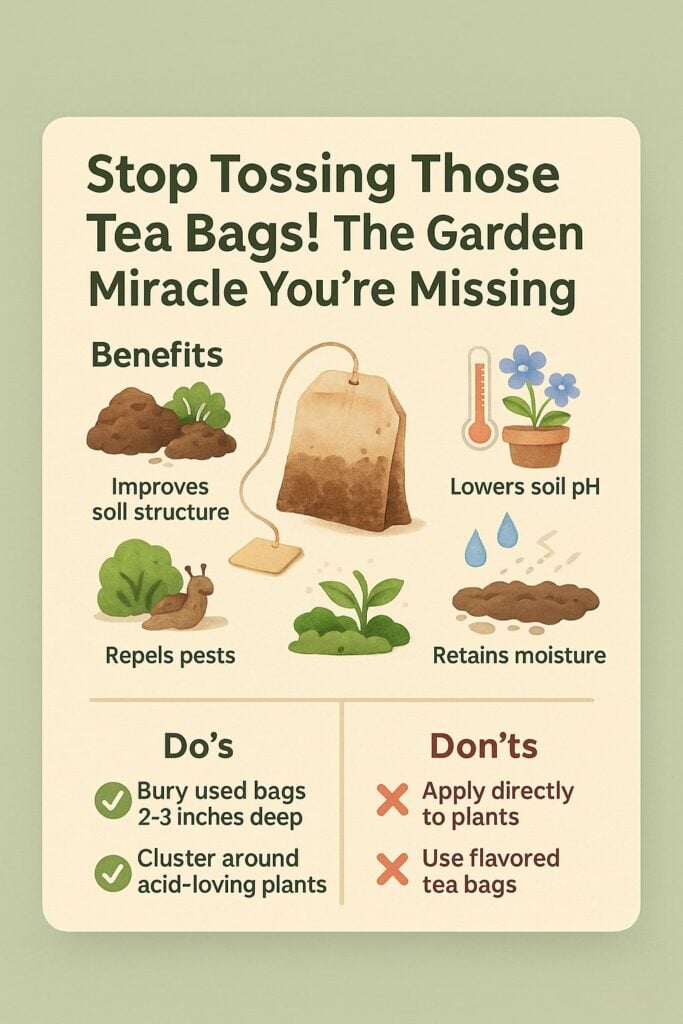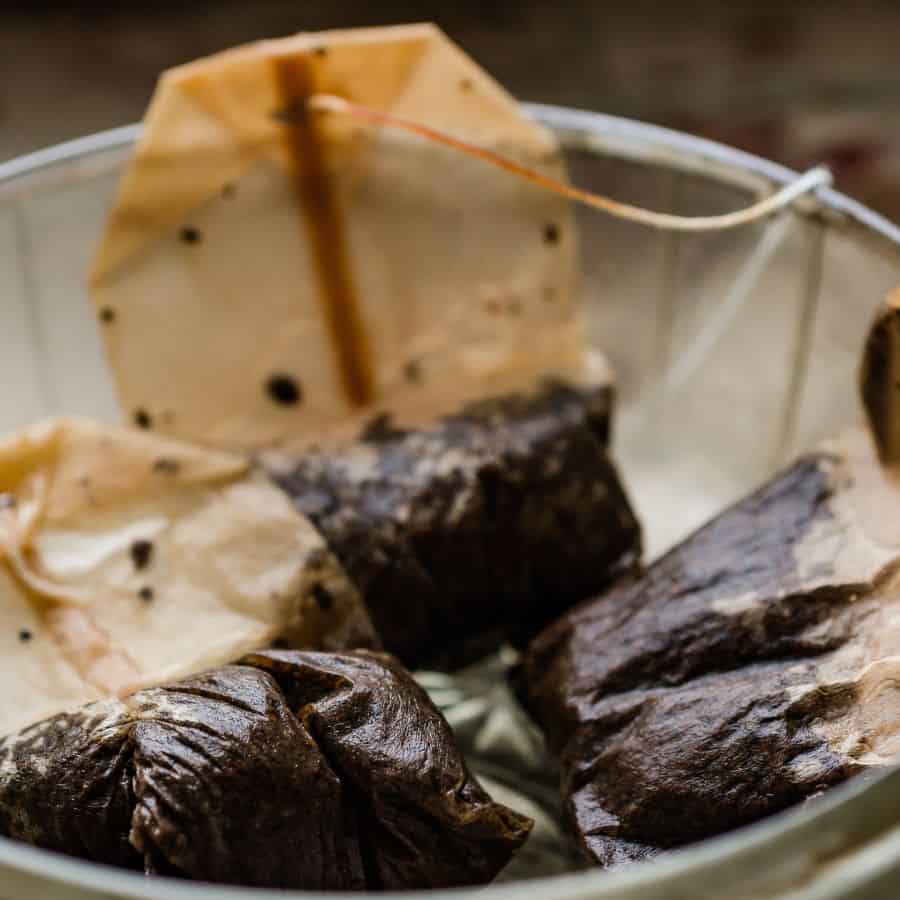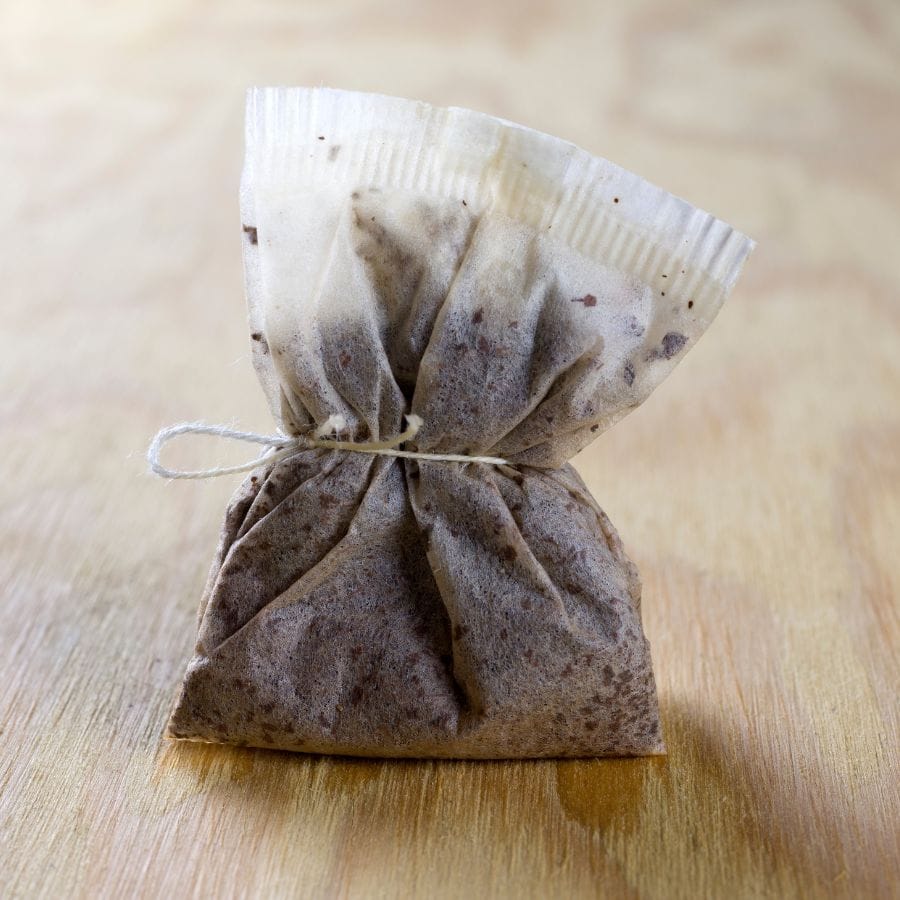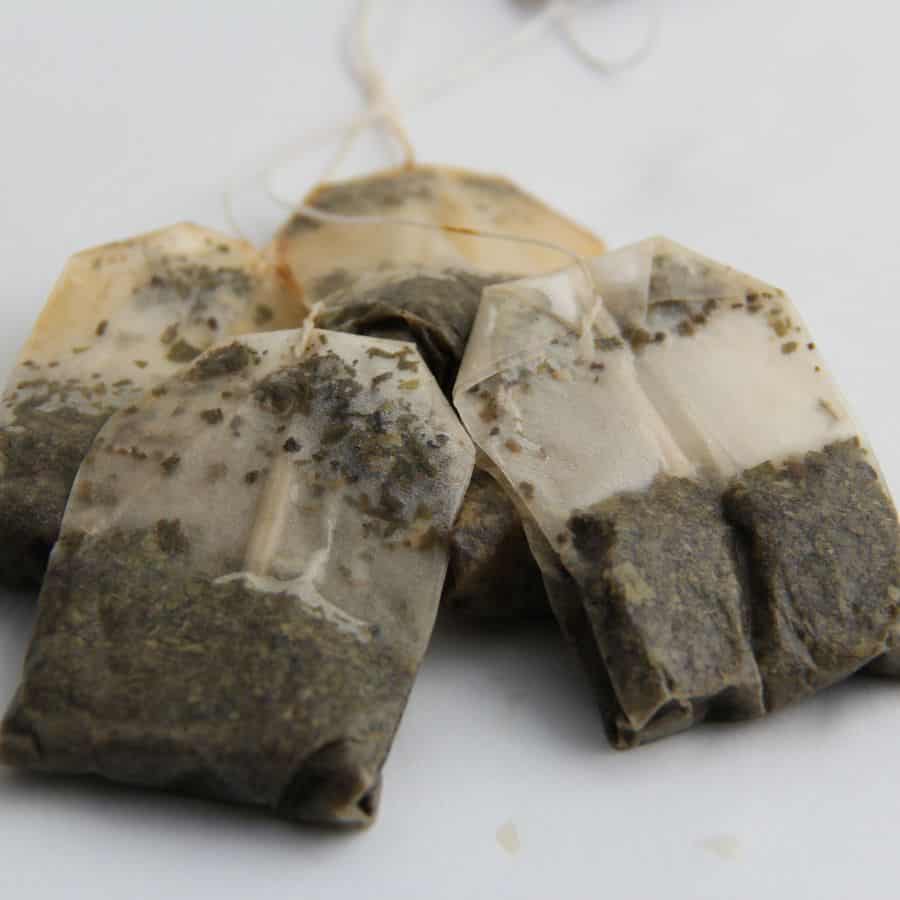
That humble tea bag sitting in your cup right now? It’s actually a secret weapon for your garden that most people toss without a second thought.
I was shocked to discover that these tiny sachets pack a powerful punch of nutrients that can transform struggling plants into thriving beauties.
Forget expensive fertilizers and complicated gardening hacks: the game-changer for your garden has been steeping in your mug all along!
The Secret Plant Superfood Hiding in Your Kitchen
Your average tea bag is like a multivitamin for your soil. Those used bags are bursting with nitrogen, potassium, and phosphorus.
The holy trinity of plant nutrients. As they break down, they release these goodies in a slow, steady stream that plants absolutely devour.


Did you know that a single used tea bag can continue releasing nutrients for up to 6 months? That’s like having a tiny, time-released fertilizer factory working underground!
(And between you and me, this is exactly why my neighbor’s garden never looks as lush as mine – she’s sending all those nutrients straight to the landfill!)
5 Dramatic Ways Tea Bags Transform Your Garden
1. Turn Your Soil into a Plant Paradise
Tea bags work like tiny soil architects, creating perfect little air pockets that prevent compaction. When your soil can breathe, roots flourish and water flows freely, rather than pooling. This is especially miraculous for clay soil, which typically holds water like a stubborn sponge.
Simply bury used tea bags a few inches deep throughout your garden beds. Over time, they’ll break down like microscopic shovels, loosening everything up for happier plants.
2. Acid-Loving Plants Will Thank You
The secret most plant experts won’t tell you is that tea bags are incredible pH adjusters. Many gorgeous plants, such as azaleas, rhododendrons, blueberries, and hydrangeas, are constantly in need of more acidic soil.
Your discarded tea bags are essentially a free pH treatment! The natural acids in tea leaves gradually leach into the soil, creating the perfect tangy environment that acid lovers crave. Just cluster a few used bags around their base and watch them respond with spectacular blooms.
3. Nature’s Pest Control System
Most people make this mistake with their gardens: reaching for chemical pest controls before trying tea bags. The tannins and strong aromas in tea naturally repel many common garden invaders without harming beneficial insects.
- Slugs and snails hate crawling over dried tea
- Aphids avoid plants treated with tea water spray
- Fungus gnats stay away from soil containing tea residue
- Ants typically avoid areas where tea bags are buried


Want an extra-powerful repellent? Peppermint, chamomile, and citrus tea bags work like garden bodyguards, creating invisible protection zones around your precious plants.
4. Rescue Drought-Stressed Plants
Ever notice how a dry tea bag can absorb an amazing amount of water? That same superpower works underground, too! Tea bags act like tiny water reservoirs in your soil, holding moisture exactly where roots need it.
During those brutal summer heat waves, plants with tea bags nearby suffer less drought stress and require less frequent watering. It’s like giving your garden its own emergency water storage system.
5. Create a Worm Paradise
Your garden’s most valuable workers? Earthworms. And guess what they find absolutely irresistible? Tea leaves!
When you add tea bags to your soil, you’re essentially sending out VIP invitations to earthworms. These soil superheroes will flock to the area, aerating as they tunnel and leaving behind nutrient-rich castings.
It’s like hiring a full-time underground maintenance crew that works for tea instead of money.
The Garden Disease Fighter You’re Throwing Away
Forget what you’ve heard about complicated fungal treatments. The antioxidants in tea, especially those powerful polyphenols, create an environment where many fungal pathogens struggle to survive.
Your plants are trying to tell you something important: they’d rather fight disease naturally.
The compounds in tea strengthen plant cell walls and inhibit common problems like powdery mildew and root rot. It’s like boosting your garden’s immune system with each tea bag you add.
Supercharge Your Compost Bin
If you’re composting without tea bags, you’re seriously missing out. These little powerhouses accelerate the entire decomposition process like natural compost activators.
The difference between amateur and pro plant parents is simply how they handle their tea waste.
When added to compost, tea bags:
- Speed up decomposition of other materials
- Add concentrated nitrogen (essential for hot composting)
- Introduce beneficial microorganisms
- Create richer, more nutrient-dense finished compost


Just remember to remove any staples or plastic components before composting. Many premium tea brands now use fully compostable materials, making the process even easier.
From Trash to Garden Treasure: How to Use Tea Bags
Ready to transform your garden with this miracle hack? Here’s how to put those used tea bags to work:
- Direct burial: Let tea bags cool, then bury them 2-3 inches deep near plants
- Tea spray: Steep 5-6 used bags in a gallon of water overnight, then spray on plants as a gentle fertilizer and pest deterrent
- Seed starter: Place a damp used tea bag in a small container and plant seeds directly into it—the nutrients boost germination rates dramatically
- Compost booster: Add to your compost bin (remove any non-compostable parts first)
- Acid soil amendment: Cluster around acid-loving plants to gradually lower soil pH
The breakthrough moment for my garden came when I started collecting family tea bags in a dedicated container. Within just one season, my plants showed dramatically improved growth and resilience.
Next time you finish a soothing cup of tea, remember: that used tea bag isn’t trash—it’s liquid gold for your garden that’s just beginning its journey!

